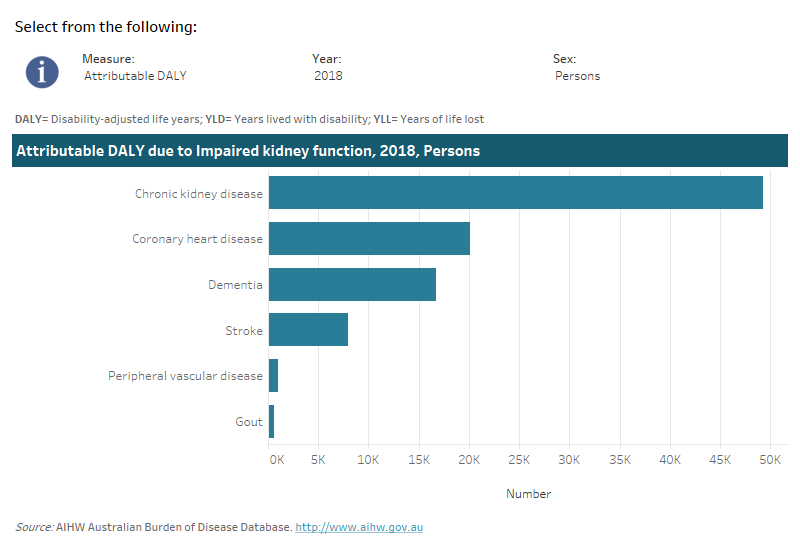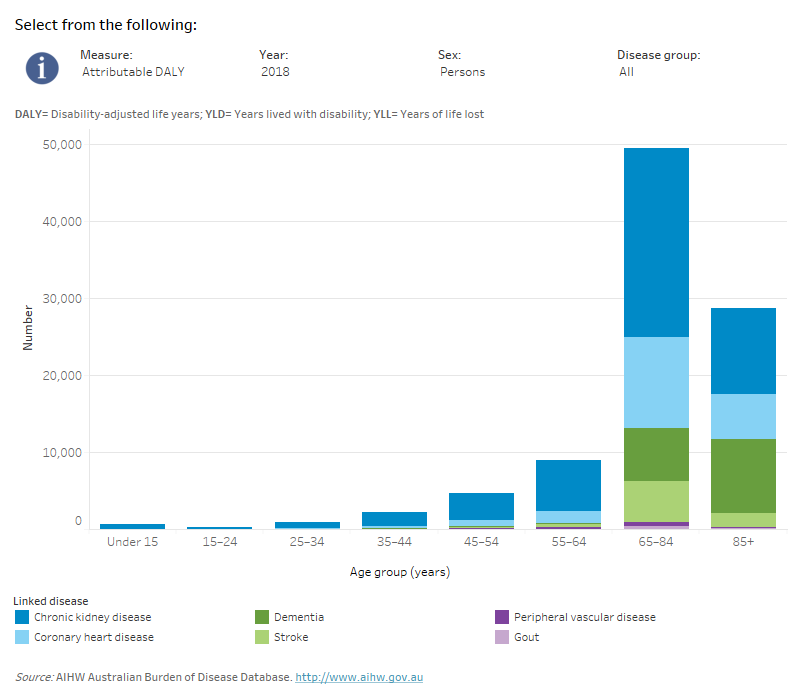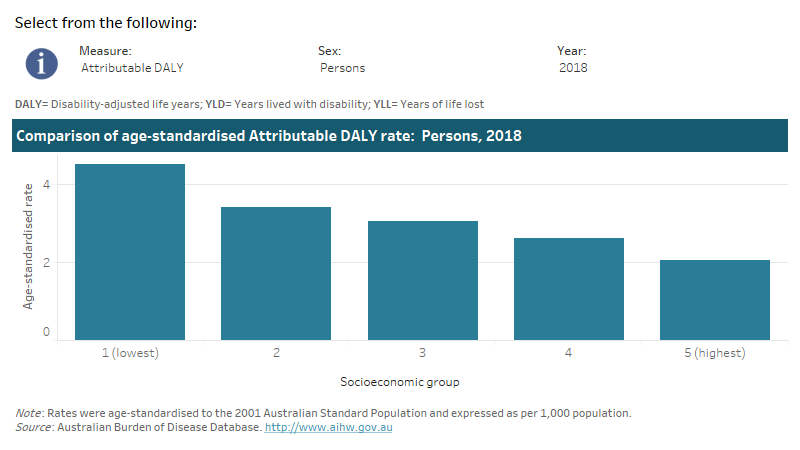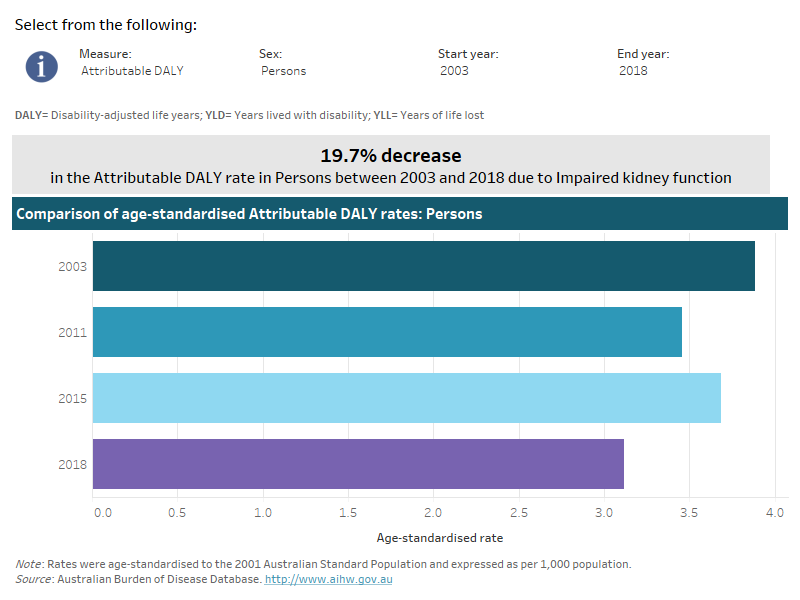Impaired kidney function
In 2018, 1.9% of the total disease burden in Australia was due to impaired kidney function (including chronic kidney disease).
These estimates reflect the amount of burden that could have been avoided if all people in Australia did not have impaired kidney function.
Impaired kidney function was causally linked to 6 diseases—chronic kidney disease, coronary heart disease, dementia, stroke, gout and peripheral vascular disease (see ABDS 2018 Risk factor estimates data table).
How much burden was attributable to impaired kidney function?
Impaired kidney function was responsible for the entire burden of chronic kidney disease, 12% of gout burden, 10% of peripheral vascular disease burden, 8% of dementia burden, and 6% of coronary heart disease and stroke burden.
This interactive data visualisation shows the burden attributable to impaired kidney function by linked disease. The main section shows a horizontal bar graph which can be customised to report data according to year, sex and measure of attributable burden. Each bar represents the attributable burden of the disease linked to impaired kidney function.

How did burden attributable to impaired kidney function vary by age and sex?
Burden due to impaired kidney function was estimated in people aged 15 and over. The majority of the total burden due to impaired kidney diseases occurred in older Australians— over the age of 65.
In people aged 65 years and over, the most burden due to impaired kidney function was from chronic kidney disease followed by coronary heart disease. In ages 65 and under, the most burden due to impaired kidney function was from chronic kidney disease.
Males experienced more burden due to impaired kidney function compared with females up to age 84; whereas females experience almost twice as much burden from impaired kidney function from age 85 onwards.
This interactive data visualisation shows the amount of burden attributable to impaired kidney function by age group and linked disease. The main section shows a stacked bar graph which can be customised to report data according to year, sex, disease group and measure of attributable burden. Each bar represents the attributable burden within a particular age group. Each bar is also split into separate components with each colour representing a disease linked to impaired kidney function.

This interactive data visualisation shows the rate of burden attributable to impaired kidney function by socioeconomic group. The main section shows a horizontal bar graph which can be customised to report data according to year, sex and measure of attributable burden. Each bar represents the attributable burden within a particular socioeconomic group due to impaired kidney function

This interactive data visualisation shows the rate of burden attributable to impaired kidney function by year. The main section shows a horizontal bar graph which can be customised to report data according to year, sex and measure of attributable burden. Each bar represents the attributable burden within a particular year due to impaired kidney function.



